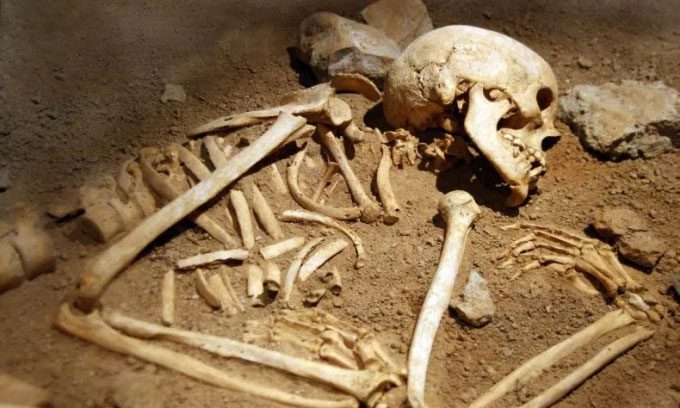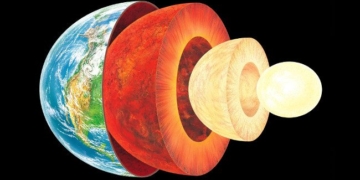The French National Institute for Preventive Archaeology (INRAP) has discovered a burial site with over 80 graves near Lake Bourget, in the Savoie region.
This cemetery likely dates back to the Merovingian period, around the 7th century, as reported by Newsweek on June 29. This is the largest and most significant burial site ever excavated in Savoie. The Merovingians were a dynasty of the Franks, existing from the mid-5th century until 751. Around 500, King Clovis I of this dynasty began to embrace Christianity.

Illustration of a skeleton buried in the ground. (Photo: iStock/Getty)
The archaeological team found that the skeletons within the graves are oriented towards the east. This is believed to be part of the Christian burial ritual—laying the deceased to face Jerusalem. This marks a shift from the earlier practice of burying multiple individuals in a single grave.
“The arms are slightly raised and angled inward. There must have been a wooden wall keeping the deceased in an unstable balance,” stated Jean-Luc Gisclon, an archaeologist and anthropologist at INRAP.
The experts also discovered that the skeletons were buried with very few items, and there were hardly any clothes. Hence, they suggest that the deceased were stripped before burial.
“There were some clothing and decorative items, but they are really negligible compared to the number of deceased. This complicates our ability to determine their social class. Whether rich or poor, old or young, they were all stripped before death,” noted Julien Blanco, another archaeologist and anthropologist at INRAP.
Scientists at INRAP hope to further study the burial site in Savoie and utilize their findings to gain insight into ancient peoples, including their beliefs and daily lives.


















































